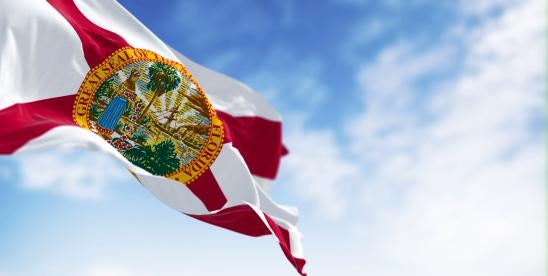New Florida Law Highlights Renewed Interest in Child Labor
New Florida Law Highlights Renewed Interest in Child Labor The National Law Review

Child Labor Laws in the United States: A Changing Landscape

Child labor is often associated with sweatshop-like conditions outside of the United States. These conditions are rightfully condemned. However, it is important to note that child labor laws within the U.S. are also undergoing changes. With labor shortages and the upcoming summer season, employers must be aware of these changes, primarily occurring at the state level.
The Impact of Child Labor Laws on Sustainable Development Goals (SDGs)
Child labor remains a pressing issue in state legislative sessions in 2024, with widespread violations and abuse of child labor laws across multiple sectors of the economy. Addressing child labor aligns with several Sustainable Development Goals (SDGs), including:
- SDG 4: Quality Education
- SDG 8: Decent Work and Economic Growth
- SDG 10: Reduced Inequalities
- SDG 16: Peace, Justice, and Strong Institutions
The response to child labor at the state level has been mixed. Some states have strengthened protections, while others have weakened child labor laws by allowing minors to work longer hours. Since 2021, twenty-eight states have considered bills related to child labor, with an equal number aiming to strengthen or weaken child labor protections.
Case Study: Florida’s Changing Child Labor Laws
Florida serves as an example of a state that has recently enacted laws allowing minors to work longer hours. In the 2024 legislative session, the Florida Legislature passed House Bill 49, which will take effect on July 1, 2024. This bill expands the ability of 16- and 17-year-old children to work more hours, including on school nights. The policy behind these changes and their expected economic impact are noteworthy.
The House of Representatives Staff Final Bill Analysis highlights the following direct economic impacts:
- The bill increases opportunities for 16- and 17-year-olds to work and generate income.
- The bill allows certain employers to employ 16- and 17-year-olds without burdensome compliance requirements.
- The bill may increase labor force participation among 16- and 17-year-olds, potentially reducing their access to higher skills, education, and healthcare.
These considerations may prompt other jurisdictions to review or modify their existing child labor laws.
Compliance with Child Labor Laws: Employer Responsibilities
Employers must be aware of federal and state child labor laws to ensure compliance. Under the Fair Labor Standards Act (FLSA), which applies nationwide, the minimum age for nonhazardous occupations is 16 years. Hazardous occupations require a minimum age of 18 years as determined by the Secretary of Labor. Specific occupations permit minors aged 14 and 15 to work under certain conditions.
Employers should regularly review child labor laws in all states where they operate to ensure compliance and identify any recent changes. Pay particular attention to regulations regarding the number of hours minors can work and required rest and meal break periods within the workday.
While recent changes have provided greater flexibility in employing minors, non-compliance can result in significant penalties. Employers must closely examine the current laws in their operating jurisdictions and understand their potential impact when employing or considering employing minors.
SDGs, Targets, and Indicators
1. Which SDGs are addressed or connected to the issues highlighted in the article?
- SDG 8: Decent Work and Economic Growth
- SDG 4: Quality Education
The article discusses changes in child labor laws in various U.S. states, which directly relates to SDG 8, which aims to promote sustained, inclusive, and sustainable economic growth, full and productive employment, and decent work for all. It also indirectly relates to SDG 4, which aims to ensure inclusive and equitable quality education and promote lifelong learning opportunities for all.
2. What specific targets under those SDGs can be identified based on the article’s content?
- Target 8.7: Take immediate and effective measures to eradicate forced labor, end modern slavery and human trafficking, and secure the prohibition and elimination of the worst forms of child labor.
- Target 4.4: By 2030, substantially increase the number of youth and adults who have relevant skills, including technical and vocational skills, for employment, decent jobs, and entrepreneurship.
The article highlights the changes in child labor laws, which can contribute to achieving Target 8.7 by strengthening protections against child labor and reducing violations. Additionally, by allowing minors to work more hours, the changes in the law can also contribute to Target 4.4 by increasing labor force participation among 16- and 17-year-old individuals and providing them with opportunities to develop relevant skills for employment.
3. Are there any indicators mentioned or implied in the article that can be used to measure progress towards the identified targets?
- Number of states strengthening child labor protections
- Number of states weakening child labor laws
- Number of hours minors are allowed to work
- Labor force participation rate among 16- and 17-year-old individuals
The article mentions that 28 states have considered bills related to child labor laws, with a mix of states either strengthening or weakening child labor protections. These indicators can be used to measure progress towards Target 8.7. Additionally, the changes in the law allowing minors to work more hours and the potential increase in labor force participation among 16- and 17-year-old individuals can be used as indicators to measure progress towards Target 4.4.
4. Table: SDGs, Targets, and Indicators
| SDGs | Targets | Indicators |
|---|---|---|
| SDG 8: Decent Work and Economic Growth | Target 8.7: Take immediate and effective measures to eradicate forced labor, end modern slavery and human trafficking, and secure the prohibition and elimination of the worst forms of child labor. | – Number of states strengthening child labor protections – Number of states weakening child labor laws |
| SDG 4: Quality Education | Target 4.4: By 2030, substantially increase the number of youth and adults who have relevant skills, including technical and vocational skills, for employment, decent jobs, and entrepreneurship. | – Number of hours minors are allowed to work – Labor force participation rate among 16- and 17-year-old individuals |
Behold! This splendid article springs forth from the wellspring of knowledge, shaped by a wondrous proprietary AI technology that delved into a vast ocean of data, illuminating the path towards the Sustainable Development Goals. Remember that all rights are reserved by SDG Investors LLC, empowering us to champion progress together.
Source: natlawreview.com

Join us, as fellow seekers of change, on a transformative journey at https://sdgtalks.ai/welcome, where you can become a member and actively contribute to shaping a brighter future.







